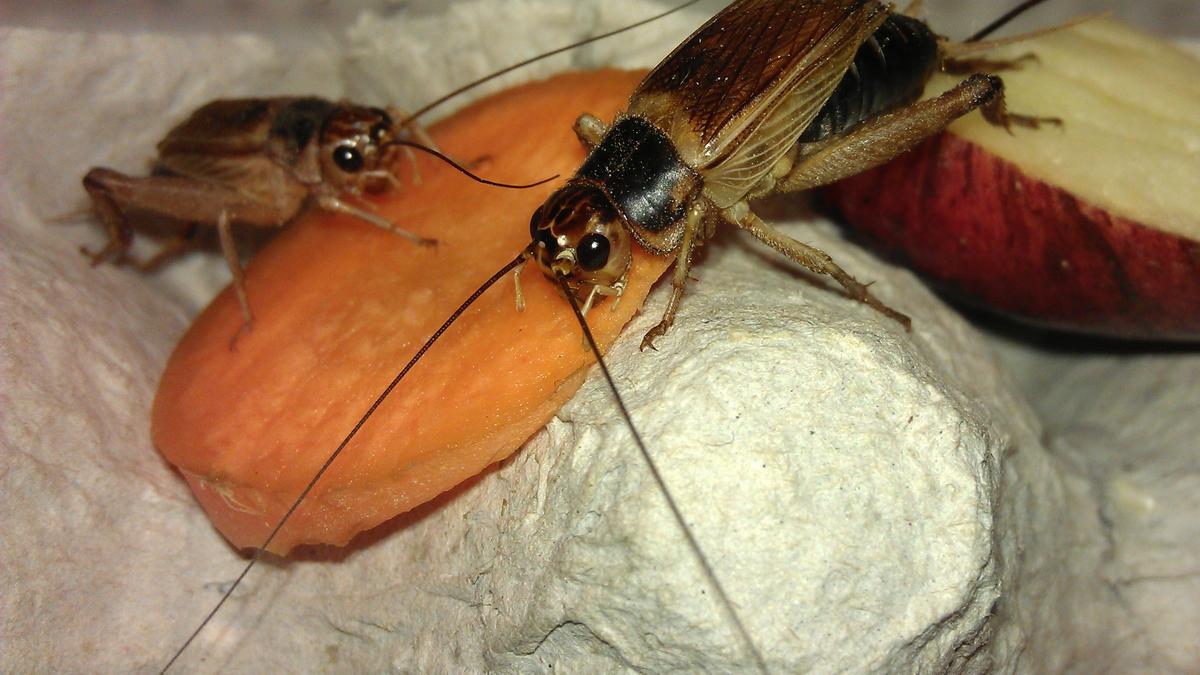Climate change is reshaping the world — and perhaps nowhere more so than in the wild. As ecosystems change, species are forced to move to new locations in search of the resources they need to live. Unlike some human-made borders that are visible as fences and walls, the wild at large has numerous borders invisible to humans crisscrossing each other.
When climate change causes an animal to migrate, it may cross one of these borders — and there new challenges await. Some newcomers quietly adapt to their new environs. Others go rogue and become invasive, throwing the lives of native species in chaos.

These invasions are becoming more common, which means more and more native species are being forced to make a choice: evolve to survive or perish. A love song vanishes On the Hawaiian islands, Pacific field crickets ( Teleogryllus oceanicus ) evolved — and how. To avoid being hunted by an invasive parasitoid fly called Ormia ochracea, they have started remixing the songs they’ve been using to find mates.
But according to a study published recently in Current Biology , these escape plans might not be foolproof, at least not yet. About 30 years ago, as O. ochracea flies flew into Hawaii from tropical America, the sound of Pacific field crickets’ love songs vanished from the islands.
Using their acute sense of hearing, the flies were able to zero in on male crickets as they sang and laid their eggs inside the crickets’ bodies. When the larvae hatched, they fed on the nutrients around them and eventually burrowed out, killing the crickets. “About 20 years ago, we discovered a population on Kauai [in Hawaii] that had gone completely silent because a mutation on their wing erased the sound-producing structures in these crickets,” University of Denver professor Robin Tinghitella said.
“Males still rubbed their wings together but no sound came out. It was a pretty wild discovery. The mutation swept through the island because it protected crickets from flies.
” Recently, however, Tinghitella’s group discovered populations of Pacific field crickets that still sang — but the music was somewhat different: it contained some additional subdued purrs and rattles. It differed in both frequency and amplitude from the original music. The researchers found that it was still loud enough to attract females but quiet enough to evade O.
ochracea flies. To Tinghitella, the crickets’ new adaptation signalled a “rapid pace of evolutionary change”. Step by step? No, thanks “This got us wondering: could the flies be evolving to keep up?” she continued.
“This kicked off a series of lab and field experiments to see if the neural and behavioural responses of flies were responding to changes in cricket songs”. To test if the flies were evolving in sync with their prey, the researchers compared the sensitivity of Hawaiian flies to certain sounds and frequencies with that of lab-maintained native flies from Florida. The ancestral Floridian flies were most sensitive to sounds around 4-6 kHz, which is also the frequency most field crickets call at.
On the other hand, the researchers found, the O. ochracea flies had broadened their hearing range, tuning into sounds from 6 to 20 kHz. Next, they placed a live fly on a spherical treadmill with speakers on either side.
When they played synthetic pre-recorded cricket songs, the Hawaiian flies were more responsive to the purrs and rattles of Pacific field crickets than their ancestral counterparts. Despite the crickets’ efforts to stay under the radar, the flies could still find them. “What we are seeing isn’t a classic incremental step-by-step co-evolution, where the cricket changes a little bit in one direction and then the fly carefully tracks that, and so on,” said Tinghitella.
“Instead, the flies have become more responsive to a broad range of sounds that might allow them to track a variety of changes in cricket song.” When the male crickets make new sounds, they aren’t changing the way they interact with flies alone. Female crickets have also become less picky in this time about male songs.
“If the females had still preferred only the traditional song, males with the mutations [that cause purrs and rattles] would not have succeeded. They would have gone locally extinct,” Tinghitella said. A new challenge How much and how quickly a species can evolve depends on its resilience, generation time, the plasticity of its traits , and ecological pressure.
For example, organisms with short generation times, like insects, reproduce rapidly so they have more chances to evolve, potentially allowing them to respond faster to new threats. Likewise, more long-lived species may be more vulnerable. Even beyond these considerations, unexpected and synergistic pressures may still destabilise either type of species, Viraj Torsekar, an ecologist at GITAM Deemed to be University, Hyderabad, said.
The populations of insects are falling in many parts of the world. Their extinction rates are estimated to be eight-times higher than those of birds, mammals or reptiles. Their vulnerability means even if conditions become more unfavourable than usual for a short period — e.
g. a year with bad weather — populations are liable to collapse than more long-lived organisms that can better face a fluctuating threat, Cleo Bertelsmeier, professor in the department of ecology and evolution at the University of Lausanne, Switzerland, said. As global warming, extreme weather, and biological invasions intensify, predicting how species with varying ecological needs will respond to compounding pressures is becoming increasingly challenging.
Many researchers are looking at the genomic architecture of wild insect species to predict their ability to adapt. According to Tinghitella, rapid evolution could explain why some invaders do so well or why some species manage to cope. To predict how these interactions are going to play out in the long-term, understanding how evolution happens in these situations is key.
Rupsy Khurana is Science Communication and Outreach Lead at the National Centre for Biological Sciences, Bengaluru. Published - May 14, 2025 05:30 am IST Copy link Email Facebook Twitter Telegram LinkedIn WhatsApp Reddit flora and fauna / conservation.
Environment

Scientists have found a cricket evolving rapidly to beat a new threat

Pacific field crickets in Hawaii are evolving to escape parasitoid flies in a surprising way















